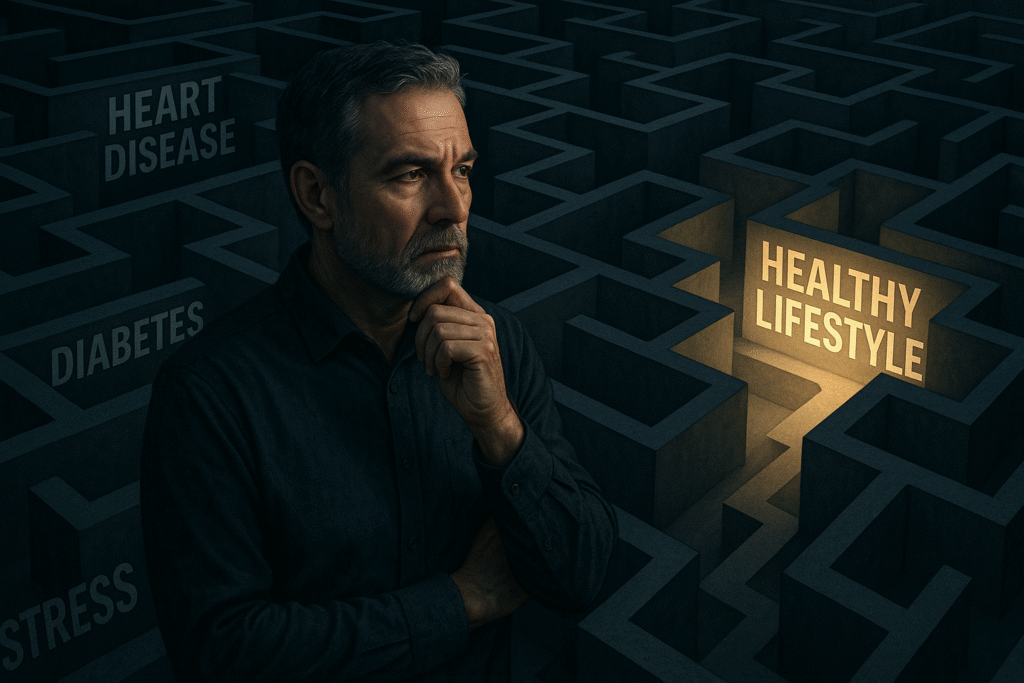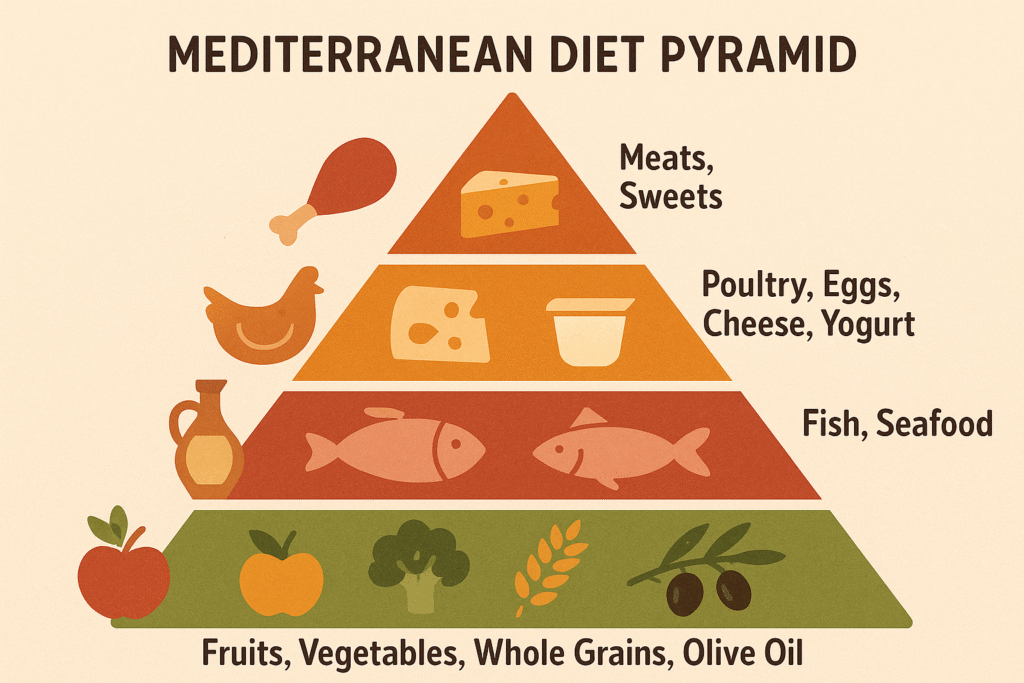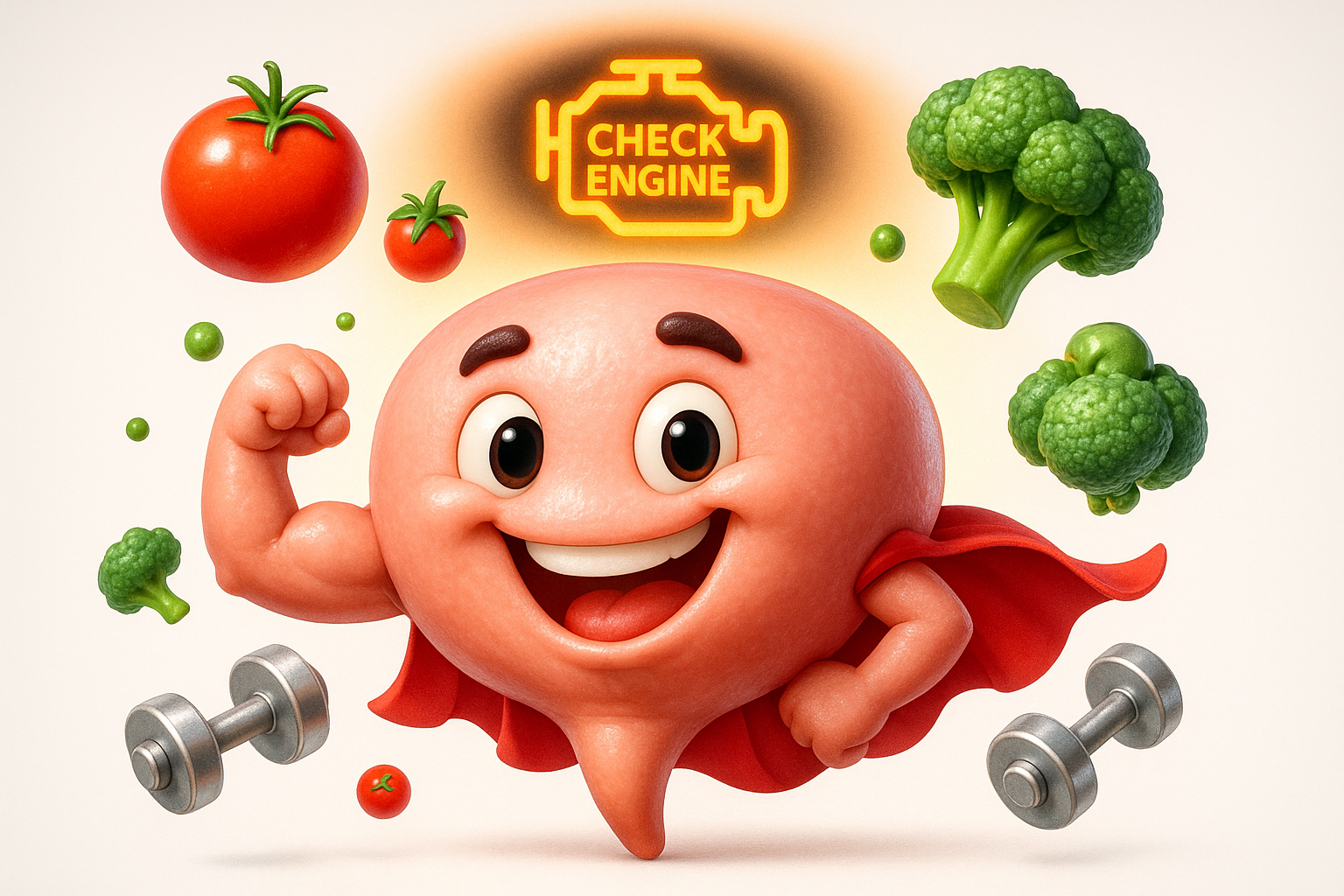The Midlife Man’s Blueprint for Optimal Health: Your Comprehensive Guide to Longevity and Vitality

Table of Contents
I. The Critical Crossroads of Midlife for Men’s Health Over 49
For many men, the years after 49 represent a significant crossroads. It’s a time of reflection, of taking stock of one’s life, career, and relationships. But perhaps most critically, it’s a time when the choices we make about our health have the most profound and lasting impact. The statistics paint a sobering picture: according to the Centers for Disease Control and Prevention (CDC), nearly 15% of men over 18 report being in fair or poor health [1]. As we age, the risks of chronic diseases like heart disease, diabetes, and cancer begin to climb, and the effects of lifestyle choices made in our younger years start to become more apparent. Heart disease remains the leading cause of death for men in the United States, and over half of adult men are living with hypertension [2].
But this isn’t a story of inevitable decline. Far from it. Midlife is not a destination, but a turning point—an opportunity to take control of your health and write a new chapter of vitality and longevity. The human body has a remarkable capacity for healing and regeneration, and the right strategies can not only mitigate the risks of aging but also unlock a new level of physical and mental well-being. This comprehensive guide is your blueprint for that transformation. We will delve into the critical health risks associated with aging and provide detailed, actionable strategies for prevention, management, and overall well-being.
From in-depth nutritional guidance and advanced exercise routines tailored for midlife to a comprehensive overview of essential health screenings and strategies for proactive healthcare engagement, this article will equip you with the knowledge and tools you need to build a healthier, more vibrant future. The journey to optimal health starts now, and the rewards—a longer, more fulfilling life—are well within your reach.
[1] Centers for Disease Control and Prevention. (2023). FastStats – Men’s Health. https://www.cdc.gov/nchs/fastats/mens-health.htm [2] American Heart Association. (2024). How to Help Prevent Heart Disease At Any Age. https://www.heart.org/en/healthy-living/healthy-lifestyle/how-to-help-prevent-heart-disease-at-any-ageII. Understanding the Health Landscape for Men Over 49

The journey into the second half of life brings with it a unique set of health considerations. For men over 49, the body’s systems begin to undergo subtle but significant changes, and the cumulative effects of lifestyle choices become increasingly apparent. Understanding this new landscape is the first step toward navigating it successfully. This section will explore the sobering statistics that define men’s health in midlife, the unique challenges that arise during this period, and the incredible opportunity for transformation that lies within reach.
The Sobering Statistics
The numbers don’t lie. Data from the Centers for Disease Control and Prevention (CDC) and other health organizations paint a clear picture of the health challenges facing men in their 50s and beyond. As mentioned, nearly 15% of men over 18 report being in fair or poor health, a number that tends to increase with age [1]. The leading causes of death for men are heart disease, cancer, and unintentional injuries, all of which have strong ties to lifestyle and preventive care [1]. Furthermore, men have a shorter average life expectancy than women, a gap that can be partially attributed to a higher prevalence of risk factors and a lower rate of engagement with the healthcare system.
The Unique Challenges of Midlife
Midlife presents a perfect storm of biological and lifestyle-related challenges. Metabolically, the body’s engine begins to run a little differently. Hormonal shifts, including a gradual decline in testosterone, can lead to changes in body composition, such as increased body fat and decreased muscle mass. This can, in turn, contribute to a slower metabolism, making weight management more difficult.
At the same time, many men in this age group are at the peak of their careers, facing significant work-related stress. Family responsibilities, such as caring for aging parents or supporting children, can add to this burden. This chronic stress can have a profound impact on health, contributing to everything from high blood pressure to a weakened immune system. The accumulated effects of lifestyle choices made in younger years also come to the forefront. Decades of a less-than-ideal diet, inconsistent exercise, or smoking can begin to take their toll, manifesting as chronic health conditions.
The Opportunity for Transformation
While the challenges are real, it’s crucial to recognize that midlife is not a sentence of decline. In fact, it’s a powerful opportunity for transformation. The body’s ability to adapt and heal remains remarkably robust, and the right interventions can have a dramatic impact on your health trajectory. It’s never too late to start making healthier choices, and the benefits of doing so are compounded over time. A man who begins a regular exercise program at 50 can, in many ways, be healthier and more vital at 60 than he was at 40.
By embracing a proactive approach to health, you can not only prevent chronic diseases but also unlock a new level of energy, resilience, and overall well-being. The following sections of this guide will provide you with the specific, evidence-based strategies you need to seize this opportunity and build a healthier, more vibrant future.
[1] Centers for Disease Control and Prevention. (2023). FastStats – Men’s Health. https://www.cdc.gov/nchs/fastats/mens-health.htmIII. The Major Health Threats: Know Your Enemy
To build a strong defense, you must first understand the threats you face. For men over 49, the health landscape is marked by a number of well-defined adversaries. These are the chronic diseases and conditions that become more prevalent with age, often driven by a combination of genetic predispositions and lifestyle factors. By understanding these major health threats, you can take proactive steps to mitigate your risk and protect your long-term well-being.
Cardiovascular Disease: The Silent Killer
Cardiovascular disease, which includes heart disease and stroke, is the undisputed heavyweight champion of health threats for men. It is the leading cause of death for men in the United States, and the statistics are staggering. According to the CDC, a shocking 50.8% of men over 18 have hypertension (high blood pressure), a primary risk factor for heart attacks and strokes [1]. High cholesterol, another major contributor, is also common.
These conditions are often referred to as “silent killers” because they can develop over many years without any obvious symptoms, quietly damaging your arteries and setting the stage for a catastrophic event. The good news is that cardiovascular disease is largely preventable. Through a combination of a heart-healthy diet, regular exercise, and appropriate medical management, you can significantly reduce your risk and keep your heart strong for years to come.
Diabetes and Metabolic Syndrome
The incidence of type 2 diabetes has been on the rise for decades, and it disproportionately affects middle-aged and older adults. After the age of 45, the risk of developing diabetes increases significantly. This condition, characterized by high blood sugar levels, is often intertwined with obesity and a sedentary lifestyle. Over time, uncontrolled diabetes can lead to a host of serious complications, including heart disease, kidney failure, nerve damage, and even blindness. Metabolic syndrome, a cluster of conditions that includes high blood pressure, high blood sugar, excess body fat around the waist, and abnormal cholesterol levels, is a major precursor to diabetes and is also increasingly common in midlife.
Cancer Risks
While cancer can strike at any age, the risk for many types of cancer increases significantly after 50. For men, the most common concerns are prostate, colorectal, and lung cancer. Prostate cancer is the most frequently diagnosed cancer in men, and while it is often slow-growing, it can be aggressive in some cases. Colorectal cancer is the third most common cancer in both men and women, and the risk begins to climb after the age of 50. Lung cancer, while strongly linked to smoking, can also affect non-smokers and remains a leading cause of cancer death. The importance of early detection through regular screenings cannot be overstated. When caught early, many cancers are highly treatable, and the chances of a full recovery are significantly higher.
Musculoskeletal Decline
The physical changes of aging often become most apparent in our muscles and bones. Sarcopenia, the age-related loss of muscle mass, can begin as early as our 40s and accelerates after 50. This loss of muscle can lead to decreased strength, mobility, and an increased risk of falls and fractures. Bone density also tends to decline with age, increasing the risk of osteoporosis. Joint health is another major concern, with many men in midlife experiencing stiffness, pain, and the onset of osteoarthritis. While some degree of musculoskeletal decline is a natural part of aging, a targeted exercise program that includes strength training and flexibility work can dramatically slow this process and help you maintain a strong, functional body.
Mental Health Challenges
The mental and emotional landscape of midlife can be just as challenging as the physical one. Many men experience a period of re-evaluation and questioning that is sometimes referred to as a “midlife crisis.” This can be a time of increased stress, anxiety, and even depression. Sleep patterns also tend to change with age, and sleep disorders like sleep apnea become more common. Chronic stress, as we’ve discussed, has a direct and detrimental impact on physical health, contributing to everything from heart disease to a weakened immune system. Prioritizing mental health through stress management techniques, adequate sleep, and professional support when needed is not a luxury—it’s an essential component of a comprehensive health strategy.
[1] Centers for Disease Control and Prevention. (2023). FastStats – Men’s Health. https://www.cdc.gov/nchs/fastats/mens-health.htmIV. The Nutritional Foundation: Fueling Your Second Act

If your body is a high-performance engine, then the food you eat is the fuel that powers it. In midlife, as your body undergoes a series of metabolic and hormonal shifts, providing it with the right kind of fuel becomes more critical than ever. The nutritional choices you make after 49 have a direct and profound impact on your energy levels, your body composition, your risk of chronic disease, and your overall longevity. This section will provide a comprehensive guide to the nutritional foundation you need to build a healthier, more vibrant second act.
Changing Nutritional Needs After 49
As you age, your body’s nutritional requirements evolve. One of the most significant changes is a gradual decrease in your metabolic rate. This means that your body needs fewer calories to maintain its weight. For men over 50, the general recommendation is to consume between 2,000 and 2,600 calories per day, depending on your activity level [1]. However, while your calorie needs may decrease, your need for certain nutrients actually increases. Key nutrients to focus on in midlife include:
•Vitamin D: Essential for bone health and immune function, the body’s ability to synthesize vitamin D from sunlight decreases with age. The recommended daily intake increases from 5 mcg to 15 mcg after 50 [2].
•Vitamin B12: This vitamin is crucial for nerve function and the formation of red blood cells. As we age, changes in the stomach lining can make it more difficult to absorb vitamin B12 from food.
•Calcium: Working in tandem with vitamin D, calcium is vital for maintaining strong bones and preventing osteoporosis.
•Fiber: A high-fiber diet is essential for digestive health, and it can also help to lower cholesterol and control blood sugar levels.
•Potassium: This mineral plays a key role in regulating blood pressure and is found in abundance in fruits and vegetables.
The Optimal Diet Framework
So, what does the optimal diet for a man over 49 look like? The research is clear: a whole-foods-based diet that is rich in fruits, vegetables, lean proteins, and healthy fats is the gold standard. A landmark study from Harvard University found that individuals who ate a nutritious diet in midlife were significantly more likely to be in excellent health in their 70s and 80s [3]. The Mediterranean diet, which emphasizes these food groups, has been consistently shown to reduce the risk of heart disease, diabetes, and other chronic conditions.
Here’s a breakdown of the recommended daily servings from various food groups:
•Vegetables: 2-3 cups
•Fruits: 1.5-2 cups
•Grains: 5-8 ounces (with at least half being whole grains)
•Protein: 5-6.5 ounces
•Dairy: 3 cups (or equivalent in calcium-fortified alternatives)
•Oils: 5-7 teaspoons
Foods to Emphasize
•A Rainbow of Fruits and Vegetables: These are packed with vitamins, minerals, antioxidants, and fiber. Aim to fill half your plate with fruits and vegetables at every meal.
•Fiber-Rich Whole Grains: Choose brown rice, quinoa, oats, and whole-wheat bread over their refined counterparts.
•Lean Proteins: Skinless poultry, fish, beans, lentils, and tofu are all excellent sources of protein, which is essential for maintaining muscle mass.
•Healthy Fats: Incorporate sources of monounsaturated and polyunsaturated fats, such as avocados, nuts, seeds, and olive oil. Oily fish like salmon and sardines are rich in omega-3 fatty acids, which are particularly beneficial for heart and brain health.
Foods to Limit or Avoid
•Saturated and Trans Fats: Found in red meat, full-fat dairy products, and many processed foods, these fats can raise your cholesterol levels and increase your risk of heart disease.
•Excessive Sodium: A high-sodium diet is a major contributor to high blood pressure. Aim to consume less than 2,300 milligrams of sodium per day.
•Added Sugars: Found in sugary drinks, desserts, and many processed foods, added sugars provide empty calories and can contribute to weight gain and insulin resistance.
•Processed and Ultra-Processed Foods: These foods are often high in unhealthy fats, sodium, and sugar and typically low in nutrients.
•Alcohol: If you choose to drink, do so in moderation. This means no more than two drinks per day for men.
Practical Implementation
Making lasting changes to your diet can be challenging, but with a few practical strategies, you can set yourself up for success. Start by planning your meals for the week and creating a grocery list. This will help you to avoid impulse purchases and ensure that you have healthy options on hand. Cooking at home as much as possible will give you greater control over the ingredients in your food. When you do eat out, look for restaurants that offer healthy options and be mindful of portion sizes. Finally, become a savvy label reader. Pay attention to the serving size, calories, and the amounts of saturated fat, sodium, and added sugars in the foods you buy.
[1] U.S. Department of Agriculture. (n.d.). MyPlate. https://www.myplate.gov/ [2] National Institutes of Health. (2021). Vitamins and Minerals for Older Adults. https://www.nia.nih.gov/health/vitamins-and-supplements/vitamins-and-minerals-older-adults [3] Samieri, C., Sun, Q., Townsend, M. K., Chiuve, S. E., Rimm, E. B., & Grodstein, F. (2013). The relation of midlife diet to healthy aging: a cohort study. Annals of internal medicine, 159(9), 584–591. https://doi.org/10.7326/0003-4819-159-9-201311050-00005V. The Exercise Prescription: Building Strength for Life

If nutrition is the fuel, then exercise is the engine that drives your health. For men over 49, a regular exercise program is not just about looking good—it’s about maintaining your strength, your mobility, your independence, and your vitality for years to come. The science is unequivocal: exercise is one of the most powerful tools you have to combat the effects of aging and prevent chronic disease. This section will provide a comprehensive guide to the exercise prescription you need to build a stronger, more resilient body for life.
The Science of Exercise After 49
As we age, our bodies naturally undergo a process of decline. Sarcopenia, the age-related loss of muscle mass, can begin as early as our 40s and accelerates after 50. This loss of muscle is not just a cosmetic issue; it leads to decreased strength, a slower metabolism, and an increased risk of falls and fractures. Bone density also tends to decline, increasing the risk of osteoporosis. However, a targeted exercise program can dramatically slow, and in some cases even reverse, these processes.
Strength training, in particular, has been shown to be incredibly effective at building and maintaining muscle mass and bone density at any age. Exercise also has profound benefits for your cardiovascular system. It strengthens your heart, improves your circulation, and helps to control your blood pressure and cholesterol levels. And the benefits don’t stop there. Regular physical activity is also a powerful tool for improving your mental health, reducing stress, and enhancing your cognitive function.
The Complete Exercise Framework
The American Heart Association and the Centers for Disease Control and Prevention have established clear guidelines for physical activity for adults. The recommendations for men over 49 are as follows:
•Aerobic Exercise: At least 150 minutes of moderate-intensity aerobic activity or 75 minutes of vigorous-intensity aerobic activity per week [1].
•Strength Training: At least two days per week, working all major muscle groups (legs, hips, back, abdomen, chest, shoulders, and arms) [1].
•Flexibility and Balance: Regular flexibility and balance exercises are also recommended to maintain joint health and prevent falls.
Cardiovascular Training
Aerobic exercise, also known as cardio, is any activity that raises your heart rate and gets you breathing harder. This type of exercise is essential for strengthening your heart and lungs. Examples of moderate-intensity cardio include brisk walking, cycling, swimming, and dancing. Vigorous-intensity cardio includes activities like running, jumping rope, and high-intensity interval training (HIIT). A good way to gauge your intensity is the “talk test.” During moderate-intensity activity, you should be able to talk, but not sing. During vigorous-intensity activity, you will only be able to speak a few words at a time. It’s important to choose activities that you enjoy, as this will make it more likely that you’ll stick with them in the long run.
Strength Training Essentials
Strength training is the cornerstone of an effective anti-aging exercise program. By challenging your muscles with resistance, you stimulate them to grow stronger and more resilient. The most effective strength training programs are built around compound exercises, which are movements that work multiple muscle groups at once. Examples of compound exercises include squats, deadlifts, lunges, push-ups, and pull-ups. The principle of progressive overload is key to making continued progress.
This means that you must gradually increase the challenge to your muscles over time, either by lifting heavier weights, doing more repetitions, or reducing your rest time between sets. It’s also crucial to allow for adequate recovery time. Your muscles grow and repair themselves in the time between your workouts, so be sure to schedule at least one rest day per week.
Flexibility and Mobility
As we age, our muscles and joints can become stiff and tight, limiting our range of motion and increasing our risk of injury. Regular flexibility and mobility work can help to counteract these effects. This can be as simple as incorporating a few minutes of stretching into your daily routine. Yoga and tai chi are also excellent forms of exercise for improving flexibility, balance, and body awareness. By maintaining good joint health, you can continue to enjoy your favorite activities without pain or limitation.
Creating Your Personal Program
The best exercise program is the one that you will actually do. It’s important to create a program that fits your current fitness level, your goals, and your lifestyle. If you’re new to exercise, start slowly and gradually increase the intensity and duration of your workouts. A certified personal trainer or physical therapist can be an invaluable resource in helping you to design a safe and effective program.
Whether you choose to work out at home or at a gym, the key is to be consistent. Schedule your workouts in your calendar just as you would any other important appointment. By making exercise a non-negotiable part of your routine, you can build a stronger, healthier, and more vibrant body for life.
[1] American Heart Association. (2024). American Heart Association Recommendations for Physical Activity in Adults and Kids. https://www.heart.org/en/healthy-living/fitness/fitness-basics/aha-recs-for-physical-activity-in-adultsVI. The Screening Strategy: Early Detection Saves Lives

In the battle against the health threats of midlife, knowledge is your greatest weapon. And when it comes to your health, the most critical knowledge comes from regular medical screenings. These tests and examinations can detect potential problems long before they become serious, giving you the best possible chance for successful treatment and a full recovery. However, studies have shown that men are often reluctant to seek preventive medical care. This section will underscore the importance of proactive healthcare and provide a comprehensive guide to the essential screenings that every man over 49 should have on his radar.
The Importance of Proactive Healthcare
There are many reasons why men tend to avoid the doctor. Some may feel that they are too busy, while others may be hesitant to confront potential health problems. However, the cost of delayed diagnosis can be incredibly high. Many of the most serious health conditions that affect men in midlife, such as heart disease, diabetes, and cancer, can develop silently for years without any obvious symptoms. By the time symptoms do appear, the disease may be in an advanced stage, making it much more difficult to treat. Regular screenings can catch these conditions in their earliest, most treatable stages. Building a strong relationship with a primary care physician is the first step in developing a proactive healthcare strategy. Your doctor can help you to understand your individual risk factors and create a personalized screening schedule that is right for you.
Essential Screenings by Age
While your individual screening needs may vary based on your personal and family health history, there are a number of standard screenings that are recommended for all men over 49.
•Annual Physical Exam: After the age of 50, it is recommended that you have a comprehensive physical exam every year. This is an opportunity for your doctor to assess your overall health, discuss any concerns you may have, and ensure that you are up-to-date on all of your screenings and immunizations.
•Blood Pressure Screening: With over half of adult men living with hypertension, regular blood pressure screenings are essential. Your blood pressure should be checked at least once a year, or more often if you have been diagnosed with high blood pressure.
•Cholesterol Panel: A fasting lipid panel measures your total cholesterol, LDL (“bad”) cholesterol, HDL (“good”) cholesterol, and triglycerides. This test should be done every four to six years, or more frequently if you have other risk factors for heart disease.
•Diabetes Screening: A fasting blood glucose test is used to screen for diabetes. This test should be done by the age of 45, and then every three years thereafter. If you are overweight or have other risk factors for diabetes, your doctor may recommend more frequent screenings.
Cancer Screening Protocols
•Colorectal Cancer Screening: The American Cancer Society recommends that men at average risk for colorectal cancer begin regular screenings at age 45. There are several different screening options available, including stool-based tests and visual exams like colonoscopy. Your doctor can help you to decide which test is right for you.
•Prostate Cancer Screening: The decision to be screened for prostate cancer is a personal one that should be made in consultation with your doctor. The most common screening methods are the prostate-specific antigen (PSA) blood test and the digital rectal exam (DRE). The American Cancer Society recommends that men begin discussing the pros and cons of prostate cancer screening with their doctor at age 50.
•Lung Cancer Screening: For men who are current or former heavy smokers, the U.S. Preventive Services Task Force recommends annual screening for lung cancer with a low-dose computed tomography (LDCT) scan.
•Skin Cancer Screening: You should perform regular self-exams of your skin to check for any new or changing moles or other suspicious lesions. Your primary care physician or a dermatologist can also perform a professional skin exam as part of your regular check-up.
Specialized Assessments
In addition to the standard screenings, your doctor may recommend other specialized assessments based on your individual risk factors. These may include a cardiovascular risk assessment, a bone density scan to screen for osteoporosis, or regular eye and hearing exams. It is also important to be open and honest with your doctor about your mental health. Your doctor can screen you for depression and other mental health conditions and can refer you to a mental health professional if needed.
By taking a proactive approach to your health and staying up-to-date on your recommended screenings, you can catch potential problems early and give yourself the best possible chance for a long and healthy life.
VII. Sleep and Stress: The Overlooked Pillars of Health

In our fast-paced, high-pressure world, sleep and stress management are often the first things to be sacrificed. However, for men over 49, these two factors are not luxuries—they are essential pillars of health that have a profound impact on everything from your cardiovascular and metabolic health to your cognitive function and emotional well-being. This section will explore the unique sleep and stress challenges of midlife and provide practical strategies for optimizing these critical aspects of your health.
Sleep Challenges After 49
As we age, our sleep patterns naturally change. The architecture of our sleep evolves, and we tend to spend less time in the deep, restorative stages of sleep. This can lead to feeling less rested in the morning, even after a full night in bed. It also becomes more common to wake up during the night, making it harder to get a consolidated block of sleep. One of the most significant sleep-related challenges for men in midlife is the increased prevalence of sleep apnea, a condition in which breathing repeatedly stops and starts during sleep. Sleep apnea is often associated with loud snoring, and it can have serious consequences for your health, including an increased risk of high blood pressure, heart disease, and stroke.
Optimizing Sleep Quality
While you can’t turn back the clock on your sleep architecture, there are many things you can do to improve the quality of your sleep. The foundation of good sleep is good sleep hygiene. This includes:
•Sticking to a consistent sleep schedule: Go to bed and wake up at the same time every day, even on weekends.
•Creating a relaxing bedtime routine: This could include taking a warm bath, reading a book, or listening to calming music.
•Optimizing your sleep environment: Your bedroom should be dark, quiet, and cool.
•Avoiding stimulants like caffeine and nicotine in the evening.
•Limiting alcohol consumption, especially before bed. While alcohol may help you to fall asleep initially, it can disrupt your sleep later in the night.
If you are still having trouble sleeping, or if you suspect that you may have a sleep disorder like sleep apnea, it is important to talk to your doctor. They may recommend a sleep study to diagnose the problem and can discuss treatment options with you.
Stress Management Strategies
Midlife can be a time of significant stress for men. The pressures of work, family, and finances can all take a toll on your mental and emotional well-being. And this chronic stress can have a direct and detrimental impact on your physical health. When you are under stress, your body releases a flood of hormones, including cortisol and adrenaline. These hormones can raise your blood pressure, increase your heart rate, and contribute to inflammation throughout your body. Over time, this can increase your risk of a wide range of health problems, including heart disease, diabetes, and a weakened immune system.
Fortunately, there are many effective strategies for managing stress. Regular exercise is one of the most powerful stress-busters available. Mindfulness and meditation have also been shown to be incredibly effective at reducing stress and promoting a sense of calm and well-being. There are many apps and online resources that can guide you through these practices. Spending time in nature, connecting with friends and family, and making time for hobbies and activities that you enjoy are also important for managing stress. If you are struggling to cope with stress on your own, don’t hesitate to seek professional help. A therapist or counselor can provide you with tools and strategies for managing stress and can help you to navigate the unique challenges of midlife.
VIII. Supplements and Vitamins: Filling the Gaps
In an ideal world, we would get all of the nutrients we need from the food we eat. However, for men over 49, it can be challenging to meet all of your nutritional needs through diet alone. Age-related changes in the body can affect how we absorb and utilize certain nutrients, and it can be difficult to consistently eat a perfectly balanced diet. This is where supplements and vitamins can play a valuable role. When used wisely, they can help to fill the nutritional gaps and provide targeted support for the health challenges of midlife. This section will provide a guide to the most important supplements and vitamins for men over 49 and offer some practical advice for smart supplementation.
Age-Related Nutritional Needs
As we discussed in the nutrition section, the body’s need for certain nutrients changes as we age. Some of the most important nutrients to focus on in midlife include:
•Vitamin D: The recommended daily intake for vitamin D increases from 5 mcg to 15 mcg after the age of 50 [1]. This is because the body’s ability to synthesize vitamin D from sunlight decreases with age, and it can be difficult to get enough of this nutrient from food alone.
•Vitamin B12: Changes in the stomach lining can make it more difficult to absorb vitamin B12 from food as we age. A supplement can help to ensure that you are getting enough of this important nutrient.
•Calcium: Calcium is essential for maintaining strong bones, and the risk of osteoporosis increases with age. If you are not getting enough calcium from your diet, a supplement may be necessary.
•Omega-3 Fatty Acids: These healthy fats, found in oily fish, are important for heart and brain health. If you don’t eat fish regularly, a supplement can be a good way to get the omega-3s you need.
Evidence-Based Supplement Strategies
While there are countless supplements on the market that claim to offer a wide range of health benefits, it is important to focus on those that are backed by scientific evidence. For men over 49, some of the most beneficial supplements include:
•A high-quality multivitamin: A multivitamin specifically formulated for men over 50 can be a good way to cover your bases and ensure that you are getting a broad range of essential vitamins and minerals.
•Vitamin D: As mentioned, a vitamin D supplement is often recommended for older adults.
•Omega-3 fatty acids: Look for a supplement that contains both EPA and DHA, the two most important types of omega-3s.
•Probiotics: These beneficial bacteria can help to support digestive health and may also have benefits for your immune system.
Smart Supplementation Guidelines
When it comes to supplements, more is not always better. It is important to follow these smart supplementation guidelines:
•Food first: Supplements should be used to supplement a healthy diet, not to replace it.
•Choose quality products: Look for supplements that have been independently tested for quality and purity by a third-party organization like USP or NSF.
•Avoid mega-doses: Taking excessively high doses of certain vitamins and minerals can be toxic. Stick to the recommended daily allowances unless your doctor advises otherwise.
•Talk to your doctor: Before you start taking any new supplement, it is important to talk to your doctor. They can help you to determine which supplements are right for you and can ensure that they won’t interact with any medications you are taking.
[1] National Institutes of Health. (2021). Vitamins and Minerals for Older Adults. https://www.nia.nih.gov/health/vitamins-and-supplements/vitamins-and-minerals-older-adultsIX. Your Action Plan: Implementing the Blueprint

Knowledge is only powerful when it is put into action. You now have a comprehensive blueprint for optimal health in midlife and beyond. But the most important step is the one you take next. This section will provide a practical action plan to help you to implement the strategies outlined in this guide and begin your journey to a healthier, more vibrant future.
Getting Started: The First 30 Days
The first 30 days are all about building momentum and establishing a new set of healthy habits. Don’t try to change everything at once. Instead, focus on a few key priorities:
•Schedule a physical exam: If you haven’t had a check-up in the last year, make an appointment with your primary care physician. This is the first and most important step in taking control of your health.
•Make one small dietary change: This could be as simple as adding a serving of vegetables to every meal, or swapping out sugary drinks for water.
•Start moving: Aim for at least 30 minutes of moderate-intensity exercise, such as brisk walking, on most days of the week.
•Prioritize sleep: Make a commitment to getting at least seven hours of sleep per night.
Building Momentum: Months 2-6
Once you have established a foundation of healthy habits, you can begin to build on your success. In the months that follow, focus on:
•Progressive goal setting: Gradually increase the intensity and duration of your workouts. Set new dietary goals, such as trying a new healthy recipe each week.
•Tracking your progress: Keep a journal to track your workouts, your food intake, and how you are feeling. This will help you to stay motivated and to identify what is working and what is not.
•Adjusting your strategies: Be prepared to make adjustments to your plan as you go. What works for one person may not work for another. The key is to find a sustainable approach that you can stick with in the long run.
Long-term Success: Creating Lasting Change
The ultimate goal is to create a set of healthy habits that will last a lifetime. This requires a long-term commitment and a willingness to persevere through setbacks. Here are a few key principles for creating lasting change:
•Focus on habit formation: It takes time to form new habits. Be patient with yourself and celebrate your successes along the way.
•Don’t let setbacks derail you: Everyone has off days. The key is to not let a single slip-up turn into a complete relapse. Get back on track with your next meal or your next workout.
•Regularly reassess your goals: As you get healthier and fitter, your goals will change. Regularly reassess your progress and set new goals to keep yourself challenged and motivated.
Building Your Support Network
You don’t have to go on this journey alone. Building a strong support network can make all the difference. This includes:
•Your healthcare team: Your primary care physician, a registered dietitian, and a certified personal trainer can all provide you with expert guidance and support.
•Your family and friends: Let your loved ones know about your health goals and ask for their support.
•A community of like-minded individuals: Joining a gym, a running club, or an online forum can be a great way to connect with other people who are on a similar journey.
X. Conclusion: Your Journey to Optimal Health Starts Now
The journey to optimal health is not a destination, but a lifelong process of learning, growing, and evolving. The choices you make today will have a profound impact on your health and well-being for years to come. You now have a comprehensive blueprint for navigating the unique health challenges of midlife and building a stronger, more vibrant future. From understanding the major health threats you face to implementing a proactive strategy of nutrition, exercise, and preventive care, you have the knowledge and the tools you need to take control of your health.
The path to a healthier life is not always easy, but the rewards are immeasurable. By embracing the strategies outlined in this guide, you can not only reduce your risk of chronic disease but also unlock a new level of energy, vitality, and overall well-being. The journey of a thousand miles begins with a single step. Take that step today. Your future self will thank you for it.
Engage with the Community
What’s your biggest health challenge after 49? Share your experiences and insights in the comments below. Your story could inspire and help other men on their health journey.
Have you implemented any of these strategies? We’d love to hear about your successes, challenges, and what’s working for you. Leave a comment and let’s start a conversation about men’s health in midlife.
Questions about specific health topics? Our community of health-conscious men is here to support each other. Ask your questions in the comments and benefit from collective wisdom and experience.
Take Action Today
Don’t let this information sit idle. Your health transformation starts with the very next choice you make. Here’s your immediate action checklist:
This Week:
Schedule your annual physical exam if you haven’t had one in the past year
Take a honest assessment of your current diet and identify one area for improvement
Commit to 30 minutes of physical activity for at least 3 days this week
Evaluate your sleep habits and make one change to improve sleep quality
This Month:
Complete any overdue health screenings appropriate for your age
Establish a consistent exercise routine that includes both cardio and strength training
Plan and prepare healthy meals for the week ahead
Implement stress management techniques into your daily routine
Share your commitment: Comment below with one specific action you’re going to take this week. Making your commitment public increases your likelihood of following through.
Connect and Stay Informed
Join the conversation: Follow us for more evidence-based health insights and connect with a community of men committed to optimal health and longevity.
Share this guide: Know someone who could benefit from this comprehensive health blueprint? Share this article and help spread the message that it’s never too late to transform your health.
Stay updated: Subscribe to our newsletter for the latest research, practical tips, and success stories from men who’ve transformed their health after 49.
Disclaimer: This article is for informational purposes only and is not intended as medical advice. Always consult with qualified healthcare professionals before making significant changes to your diet, exercise routine, or health management strategy. Individual results may vary, and what works for one person may not be appropriate for another.








One Comment